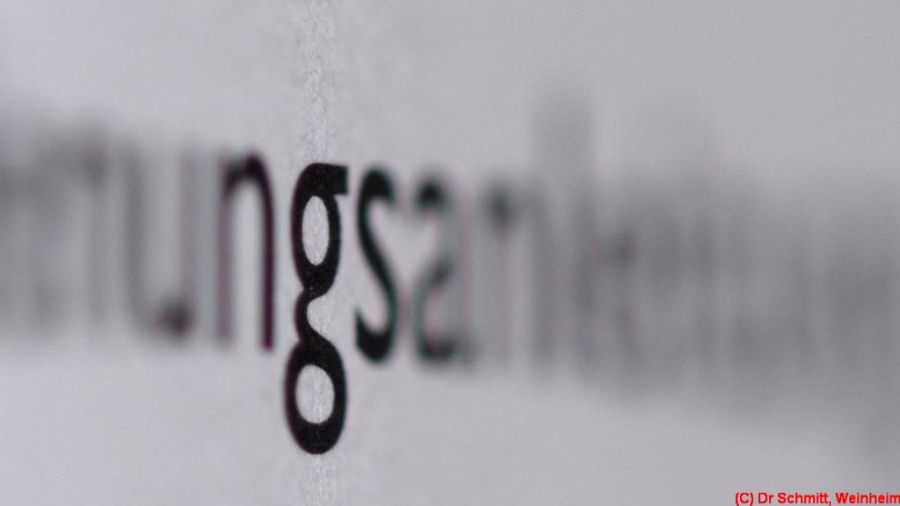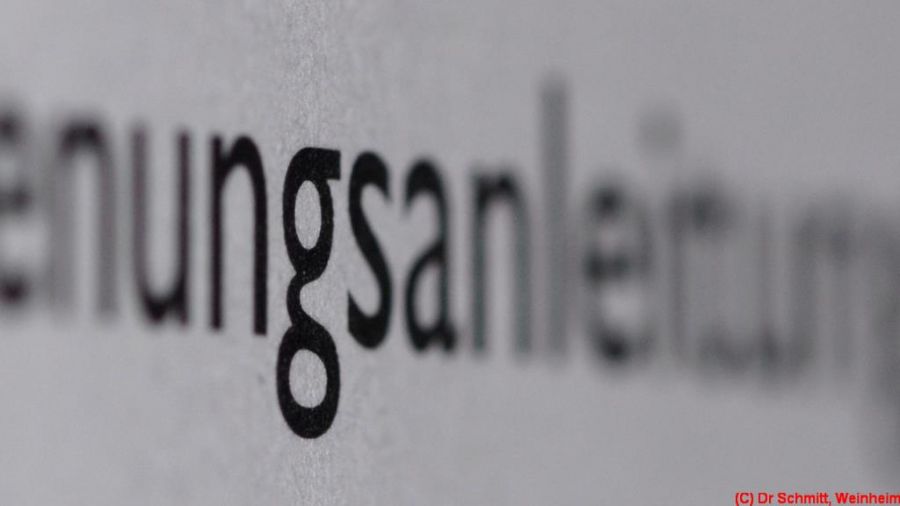| View previous topic :: View next topic |
| Author |
Message |
kds315*


Joined: 12 Mar 2008
Posts: 16658
Location: Weinheim, Germany
Expire: 2021-03-09
|
 Posted: Sat Oct 24, 2009 8:10 pm Post subject: Zeiss Makro Planar 2/100mm OOF CA Study Posted: Sat Oct 24, 2009 8:10 pm Post subject: Zeiss Makro Planar 2/100mm OOF CA Study |
 |
|
kds315* wrote:
An OOF CA test of the Zeiss Makro Planar 2/100mm showing some OOF green/purple fringing, but which disappears from about f4 onwards:





some real life tests shot at f2




so, do you like the green or the purple reflections better? 
And sorry to say that as a big Zeiss fan, the Voigtländer Makro
Apo Lanthar 2.5/125mm does that much better and gives true 1:1.
_________________
Klaus - Admin
"S'il vient a point, me souviendra" [Thomas Bohier (1460-1523)]
http://www.macrolenses.de for macro and special lens info
http://www.pbase.com/kds315/uv_photos for UV Images and lens/filter info
https://www.flickr.com/photos/kds315/albums my albums using various lenses
http://photographyoftheinvisibleworld.blogspot.com/ my UV BLOG
http://www.travelmeetsfood.com/blog Food + Travel BLOG
https://galeriafotografia.com Architecture + Drone photography
Currently most FAV lens(es):
X80QF f3.2/80mm
Hypergon f11/26mm
ELCAN UV f5.6/52mm
Zeiss UV-Planar f4/60mm
Zeiss UV-Planar f2/62mm
Lomo Уфар-12 f2.5/41mm
Lomo Зуфар-2 f4.0/350mm
Lomo ZIKAR-1A f1.2/100mm
Nikon UV Nikkor f4.5/105mm
Zeiss UV-Sonnar f4.3/105mm
CERCO UV-VIS-NIR f1.8/45mm
CERCO UV-VIS-NIR f4.1/94mm
CERCO UV-VIS-NIR f2.8/100mm
Steinheil Quarzobjektiv f1.8/50mm
Pentax Quartz Takumar f3.5/85mm
Carl Zeiss Jena UV-Objektiv f4/60mm
NYE OPTICAL Lyman-Alpha II f1.1/90mm
NYE OPTICAL Lyman-Alpha I f2.8/200mm
COASTAL OPTICS f4/60mm UV-VIS-IR Apo
COASTAL OPTICS f4.5/105mm UV-Micro-Apo
Pentax Ultra-Achromatic Takumar f4.5/85mm
Pentax Ultra-Achromatic Takumar f5.6/300mm
Rodenstock UV-Rodagon f5.6/60mm + 105mm + 150mm
|
|
| Back to top |
|
 |
F16SUNSHINE


Joined: 20 Aug 2007
Posts: 5486
Location: Left Coast
Expire: 2011-11-18
|
 Posted: Sat Oct 24, 2009 8:30 pm Post subject: Posted: Sat Oct 24, 2009 8:30 pm Post subject: |
 |
|
F16SUNSHINE wrote:

Surprised as can be.
I think my Kiron 105 does better in this regard.
Maybe you ended up with a poor copy Klaus 
_________________
Moderator |
|
| Back to top |
|
 |
kds315*


Joined: 12 Mar 2008
Posts: 16658
Location: Weinheim, Germany
Expire: 2021-03-09
|
 Posted: Sat Oct 24, 2009 8:49 pm Post subject: Posted: Sat Oct 24, 2009 8:49 pm Post subject: |
 |
|
kds315* wrote:
Well, I was very much suprised too and was thinking a lot if I should publish that or not, the Zeiss fan I am. BUT although is is being kept somewhat "hush hush", I found a test result which confirmed my findings, so I dedcided to show my findings here.
So mine wasn't a "lemon", it is a design issue obviously - it is no "apo" lens. Here is the picture, but I don't have the link handy...

This source also confirms that:
http://ogiroux.wordpress.com/2009/03/14/carl-zeiss-2100-makro-planar-t-review/
and mentioned here:
http://www.fredmiranda.com/forum/topic/674787/0
The ZF Makro Planar 2/50mm does NOT have that!! See here:
http://www.photozone.de/nikon--nikkor-aps-c-lens-tests/259-zeiss-zf-makro-planar-t-50mm-f2-review--test-report?start=1
_________________
Klaus - Admin
"S'il vient a point, me souviendra" [Thomas Bohier (1460-1523)]
http://www.macrolenses.de for macro and special lens info
http://www.pbase.com/kds315/uv_photos for UV Images and lens/filter info
https://www.flickr.com/photos/kds315/albums my albums using various lenses
http://photographyoftheinvisibleworld.blogspot.com/ my UV BLOG
http://www.travelmeetsfood.com/blog Food + Travel BLOG
https://galeriafotografia.com Architecture + Drone photography
Currently most FAV lens(es):
X80QF f3.2/80mm
Hypergon f11/26mm
ELCAN UV f5.6/52mm
Zeiss UV-Planar f4/60mm
Zeiss UV-Planar f2/62mm
Lomo Уфар-12 f2.5/41mm
Lomo Зуфар-2 f4.0/350mm
Lomo ZIKAR-1A f1.2/100mm
Nikon UV Nikkor f4.5/105mm
Zeiss UV-Sonnar f4.3/105mm
CERCO UV-VIS-NIR f1.8/45mm
CERCO UV-VIS-NIR f4.1/94mm
CERCO UV-VIS-NIR f2.8/100mm
Steinheil Quarzobjektiv f1.8/50mm
Pentax Quartz Takumar f3.5/85mm
Carl Zeiss Jena UV-Objektiv f4/60mm
NYE OPTICAL Lyman-Alpha II f1.1/90mm
NYE OPTICAL Lyman-Alpha I f2.8/200mm
COASTAL OPTICS f4/60mm UV-VIS-IR Apo
COASTAL OPTICS f4.5/105mm UV-Micro-Apo
Pentax Ultra-Achromatic Takumar f4.5/85mm
Pentax Ultra-Achromatic Takumar f5.6/300mm
Rodenstock UV-Rodagon f5.6/60mm + 105mm + 150mm
|
|
| Back to top |
|
 |
trifox


Joined: 14 May 2008
Posts: 3614
Location: UK
Expire: 2014-05-29
|
 Posted: Sat Oct 24, 2009 9:23 pm Post subject: Posted: Sat Oct 24, 2009 9:23 pm Post subject: |
 |
|
trifox wrote:
The Makro Planar ZF 2/50 must be better corrected for CA, I guess..
There is some similarity --
as the famous pair of Contax Makros:
Makro-Planar 2.8/60 (less CA, very close to zero) and Contax Makro-Planar 2.8/100 (more CA)
I have got both Contax MP, Poilu has both -- he can confirm that as well..
So the CA issue is going up by increasing the focal length..
tf
_________________
Flickr.com |
|
| Back to top |
|
 |
poilu

Joined: 26 Aug 2007
Posts: 10472
Location: Greece
Expire: 2019-08-29
|
 Posted: Sat Oct 24, 2009 9:24 pm Post subject: Posted: Sat Oct 24, 2009 9:24 pm Post subject: |
 |
|
poilu wrote:
interesting effect, are the text samples 100% crop? |
|
| Back to top |
|
 |
kds315*


Joined: 12 Mar 2008
Posts: 16658
Location: Weinheim, Germany
Expire: 2021-03-09
|
 Posted: Sat Oct 24, 2009 9:26 pm Post subject: Posted: Sat Oct 24, 2009 9:26 pm Post subject: |
 |
|
kds315* wrote:
croped from full format, 100% and scaled down for presentation here.
_________________
Klaus - Admin
"S'il vient a point, me souviendra" [Thomas Bohier (1460-1523)]
http://www.macrolenses.de for macro and special lens info
http://www.pbase.com/kds315/uv_photos for UV Images and lens/filter info
https://www.flickr.com/photos/kds315/albums my albums using various lenses
http://photographyoftheinvisibleworld.blogspot.com/ my UV BLOG
http://www.travelmeetsfood.com/blog Food + Travel BLOG
https://galeriafotografia.com Architecture + Drone photography
Currently most FAV lens(es):
X80QF f3.2/80mm
Hypergon f11/26mm
ELCAN UV f5.6/52mm
Zeiss UV-Planar f4/60mm
Zeiss UV-Planar f2/62mm
Lomo Уфар-12 f2.5/41mm
Lomo Зуфар-2 f4.0/350mm
Lomo ZIKAR-1A f1.2/100mm
Nikon UV Nikkor f4.5/105mm
Zeiss UV-Sonnar f4.3/105mm
CERCO UV-VIS-NIR f1.8/45mm
CERCO UV-VIS-NIR f4.1/94mm
CERCO UV-VIS-NIR f2.8/100mm
Steinheil Quarzobjektiv f1.8/50mm
Pentax Quartz Takumar f3.5/85mm
Carl Zeiss Jena UV-Objektiv f4/60mm
NYE OPTICAL Lyman-Alpha II f1.1/90mm
NYE OPTICAL Lyman-Alpha I f2.8/200mm
COASTAL OPTICS f4/60mm UV-VIS-IR Apo
COASTAL OPTICS f4.5/105mm UV-Micro-Apo
Pentax Ultra-Achromatic Takumar f4.5/85mm
Pentax Ultra-Achromatic Takumar f5.6/300mm
Rodenstock UV-Rodagon f5.6/60mm + 105mm + 150mm
Last edited by kds315* on Sat Oct 24, 2009 9:30 pm; edited 1 time in total |
|
| Back to top |
|
 |
poilu

Joined: 26 Aug 2007
Posts: 10472
Location: Greece
Expire: 2019-08-29
|
 Posted: Sat Oct 24, 2009 9:29 pm Post subject: Posted: Sat Oct 24, 2009 9:29 pm Post subject: |
 |
|
poilu wrote:
| trifox wrote: |
The Makro Planar ZF 2/50 must be better corrected for CA, I guess..
There is some similarity --
as the famous pair of Contax Makros:
Makro-Planar 2.8/60 (less CA, very close to zero) and Contax Makro-Planar 2.8/100 (more CA)
I have got both Contax MP, Poilu has both -- he can confirm that as well..
So the CA issue is going up by increasing the focal length..
tf |
the 100:2.8 have purple fringing in high contrast, the 60:2.8 zero
but purple fringing is a overload of the sensor and should be corrected in future generation as technologies progress
For CA like in the text sample, I can see trace at 2.8 but only at 100% crop |
|
| Back to top |
|
 |
kds315*


Joined: 12 Mar 2008
Posts: 16658
Location: Weinheim, Germany
Expire: 2021-03-09
|
 Posted: Sat Oct 24, 2009 9:32 pm Post subject: Posted: Sat Oct 24, 2009 9:32 pm Post subject: |
 |
|
kds315* wrote:
I honestly doubt that it is "sensor overload" - why does the Makro Apo Lanthar 125mm then NOT overload the sensor?
Maybe if it hears the Zeiss name it goes into overload mode?  
Like here in that high contrasty situation shot at f2 (leaves laft and right) - 100% crop:

_________________
Klaus - Admin
"S'il vient a point, me souviendra" [Thomas Bohier (1460-1523)]
http://www.macrolenses.de for macro and special lens info
http://www.pbase.com/kds315/uv_photos for UV Images and lens/filter info
https://www.flickr.com/photos/kds315/albums my albums using various lenses
http://photographyoftheinvisibleworld.blogspot.com/ my UV BLOG
http://www.travelmeetsfood.com/blog Food + Travel BLOG
https://galeriafotografia.com Architecture + Drone photography
Currently most FAV lens(es):
X80QF f3.2/80mm
Hypergon f11/26mm
ELCAN UV f5.6/52mm
Zeiss UV-Planar f4/60mm
Zeiss UV-Planar f2/62mm
Lomo Уфар-12 f2.5/41mm
Lomo Зуфар-2 f4.0/350mm
Lomo ZIKAR-1A f1.2/100mm
Nikon UV Nikkor f4.5/105mm
Zeiss UV-Sonnar f4.3/105mm
CERCO UV-VIS-NIR f1.8/45mm
CERCO UV-VIS-NIR f4.1/94mm
CERCO UV-VIS-NIR f2.8/100mm
Steinheil Quarzobjektiv f1.8/50mm
Pentax Quartz Takumar f3.5/85mm
Carl Zeiss Jena UV-Objektiv f4/60mm
NYE OPTICAL Lyman-Alpha II f1.1/90mm
NYE OPTICAL Lyman-Alpha I f2.8/200mm
COASTAL OPTICS f4/60mm UV-VIS-IR Apo
COASTAL OPTICS f4.5/105mm UV-Micro-Apo
Pentax Ultra-Achromatic Takumar f4.5/85mm
Pentax Ultra-Achromatic Takumar f5.6/300mm
Rodenstock UV-Rodagon f5.6/60mm + 105mm + 150mm
|
|
| Back to top |
|
 |
kds315*


Joined: 12 Mar 2008
Posts: 16658
Location: Weinheim, Germany
Expire: 2021-03-09
|
 Posted: Sat Oct 24, 2009 9:51 pm Post subject: Posted: Sat Oct 24, 2009 9:51 pm Post subject: |
 |
|
kds315* wrote:
I like working fully or nearly fully open esp. when a lens has that wonderful bokeh, but sth like that really throws me off for a lens
having that $$$$ price tag. And I like high contrast situations like that (a sorted out unsharp test shot due, but good to show what I am talking about there...)

100% crop

_________________
Klaus - Admin
"S'il vient a point, me souviendra" [Thomas Bohier (1460-1523)]
http://www.macrolenses.de for macro and special lens info
http://www.pbase.com/kds315/uv_photos for UV Images and lens/filter info
https://www.flickr.com/photos/kds315/albums my albums using various lenses
http://photographyoftheinvisibleworld.blogspot.com/ my UV BLOG
http://www.travelmeetsfood.com/blog Food + Travel BLOG
https://galeriafotografia.com Architecture + Drone photography
Currently most FAV lens(es):
X80QF f3.2/80mm
Hypergon f11/26mm
ELCAN UV f5.6/52mm
Zeiss UV-Planar f4/60mm
Zeiss UV-Planar f2/62mm
Lomo Уфар-12 f2.5/41mm
Lomo Зуфар-2 f4.0/350mm
Lomo ZIKAR-1A f1.2/100mm
Nikon UV Nikkor f4.5/105mm
Zeiss UV-Sonnar f4.3/105mm
CERCO UV-VIS-NIR f1.8/45mm
CERCO UV-VIS-NIR f4.1/94mm
CERCO UV-VIS-NIR f2.8/100mm
Steinheil Quarzobjektiv f1.8/50mm
Pentax Quartz Takumar f3.5/85mm
Carl Zeiss Jena UV-Objektiv f4/60mm
NYE OPTICAL Lyman-Alpha II f1.1/90mm
NYE OPTICAL Lyman-Alpha I f2.8/200mm
COASTAL OPTICS f4/60mm UV-VIS-IR Apo
COASTAL OPTICS f4.5/105mm UV-Micro-Apo
Pentax Ultra-Achromatic Takumar f4.5/85mm
Pentax Ultra-Achromatic Takumar f5.6/300mm
Rodenstock UV-Rodagon f5.6/60mm + 105mm + 150mm
|
|
| Back to top |
|
 |
patrickh


Joined: 23 Aug 2007
Posts: 8551
Location: Oregon
Expire: 2011-11-18
|
 Posted: Sat Oct 24, 2009 10:03 pm Post subject: Posted: Sat Oct 24, 2009 10:03 pm Post subject: |
 |
|
patrickh wrote:
Oh dear! Surprised 
patrickh
_________________
DSLR: Nikon D300 Nikon D200 Nex 5N
MF Zooms: Kiron 28-85/3.5, 28-105/3.2, 75-150/3.5, Nikkor 50-135/3.5 AIS // MF Primes: Nikkor 20/4 AI, 24/2 AI, 28/2 AI, 28/2.8 AIS, 28/3.5 AI, 35/1.4 AIS, 35/2 AIS, 35/2.8 PC, 45/2.8 P, 50/1.4 AIS, 50/1.8 AIS, 50/2 AI, 55/2.8 AIS micro, 55/3.5 AI micro, 85/2 AI, 100/2,8 E, 105/1,8 AIS, 105/2,5 AIS, 135/2 AIS, 135/2.8 AIS, 200/4 AI, 200/4 AIS micro, 300/4.5 AI, 300/4.5 AI ED, Arsat 50/1.4, Kiron 28/2, Vivitar 28/2.5, Panagor 135/2.8, Tamron 28/2.5, Tamron 90/2.5 macro, Vivitar 90/2.5 macro (Tokina) Voigtlander 90/3.5 Vivitar 105/2.5 macro (Kiron) Kaleinar 100/2.8 AI Tamron 135/2.5, Vivitar 135/2.8CF, 200/3.5, Tokina 400/5,6
M42: Vivitar 28/2.5, Tamron 28/2.5, Formula5 28/2.8, Mamiya 28/2.8, Pentacon 29/2.8, Flektogon 35/2.4, Flektogon 35/2.8, Takumar 35/3.5, Curtagon 35/4, Takumar 50/1.4, Volna-6 50/2.8 macro, Mamiya 50/1.4, CZJ Pancolar 50/1,8, Oreston 50/1.8, Takumar 50/2, Industar 50/3.5, Sears 55/1.4, Helios 58/2, Jupiter 85/2, Helios 85/1.5, Takumar 105/2.8, Steinheil macro 105/4.5, Tamron 135/2.5, Jupiter 135/4, CZ 135/4, Steinheil Culminar 135/4,5, Jupiter 135/3.5, Takumar 135/3.5, Tair 135/2.8, Pentacon 135/2.8, CZ 135/2.8, Taika 135/3.5, Takumar 150/4, Jupiter 200/4, Takumar 200/4
Exakta: Topcon 100/2.8(M42), 35/2.8, 58/1.8, 135/2.8, 135/2.8 (M42), Kyoei Acall 135/3.5
C/Y: Yashica 28/2.8, 50/1.7, 135/2.8, Zeiss Planar 50/1.4, Distagon 25/2.8
Hexanon: 28/3.5, 35/2.8, 40/1.8, 50/1.7, 52/1.8, 135/3.2, 135/3.5, 35-70/3.5, 200/3.5
P6 : Mir 38 65/3.5, Biometar 80/2.8, Kaleinar 150/2.8, Sonnar 180/2.8
Minolta SR: 28/2.8, 28/3.5, 35/2.8, 45/2, 50/2, 58/1.4, 50/1.7, 135/2.8, 200/3.5
RF: Industar 53/2.8, Jupiter 8 50/2
Enlarg: Rodagon 50/5,6, 80/5,6, 105/5.6, Vario 44-52/4, 150/5.6 180/5.6 El Nikkor 50/2,8,63/2.8,75/4, 80/5,6, 105/5.6, 135/5.6 Schneider 60/5.6, 80/5.6, 80/4S,100/5.6S,105/5.6,135/5.6, 135/5.6S, 150/5.6S, Leica 95/4 |
|
| Back to top |
|
 |
poilu

Joined: 26 Aug 2007
Posts: 10472
Location: Greece
Expire: 2019-08-29
|
 Posted: Sat Oct 24, 2009 10:22 pm Post subject: Posted: Sat Oct 24, 2009 10:22 pm Post subject: |
 |
|
poilu wrote:
| Quote: |
I like working fully or nearly fully open esp. when a lens has that wonderful bokeh, but sth like that really throws me off for a lens
having that $$$$ price tag. And I like high contrast situations like that (a unsharp test shot due, but good to show what I am talking about there...) |
your samples show serious problems
such expensive lens and such CA is not acceptable
I found a review and it seems that it is indeed a design flaw
| net review wrote: |
| The first negative is that it produces longitudinal chromatic aberrations and highlight fringing very easily. At f/2 the lens prefers gentle local contrast, and draws magenta/green casts and purple fringes on all harsh contrast edges that interact with the plane of focus. Whether this is problematic depends largely on whether shiny things like jewelry or glasses are present in or near the plane of focus. |
http://ogiroux.wordpress.com/2009/03/14/carl-zeiss-2100-makro-planar-t-review/
I don't have such problems with the 100:2.8 |
|
| Back to top |
|
 |
ChrisLilley


Joined: 01 Jan 2008
Posts: 1767
Location: Nice, France
|
 Posted: Sat Oct 24, 2009 11:28 pm Post subject: Posted: Sat Oct 24, 2009 11:28 pm Post subject: |
 |
|
ChrisLilley wrote:
| poilu wrote: |
the 100:2.8 have purple fringing in high contrast, the 60:2.8 zero
but purple fringing is a overload of the sensor and should be corrected in future generation as technologies progress
For CA like in the text sample, I can see trace at 2.8 but only at 100% crop |
Oh, here we go with the "CCD overload" theory once again.
It's odd how fans of this theory are unable to explain the green fringes, or why the sensor overload changes so much as the lens is changed for another one.
Or why, when an apochromatic lens like a Voigtländer, Mamiya or Leica is mounted, this "sensor overload" disappears.
Or why CMOS sensors suffer from CCD overload.
_________________
Camera (ˈkæ mə rə), n. Device for taking pictures in bright light
There are 10 kinds of people in the world: those who understand binary, and those who don’t. Key: Ai-P, Ai, Ai'ed, AiS
Camera: Nikon D90, D40, DK-21M eyepiece, ML-3 remote MF lenses: Nikkor 20mm f/4 K, AI'ed | N.K. Nikkor-N 24mm f/2.8 | Nikkor-N.C 24mm f/2.8 | Nikkor 28mm f/2.8 AiS late model | Арсенал (Arsenal) Мир-24Н (Mir-24N) 35mm f/2 | Cosina Voigtländer Ultron SL II 40mm f/2.0 | Micro-Nikkor 55mm f/2.8 AiS | Zoom-Nikkor 80-200 f/4.5 Ai | ЛЗОС (LZOS) Юпитер-9 (Jupiter-9) 85mm f/2 | Cosina Voigtländer APO-Lanthar 90mm f/3.5 SL | Nikkor-P 105mm f/2.5 pre-Ai, Ai'ed | Micro-Nikkor 105mm f/4 | Schneider Kreuznach Componon 105mm f/5.6 | Nikkor 135mm f/2.8, Ai'ed 1976 model | Nikkor 180mm f/2.8 ED AiS | Арсенал (Arsenal) ТЕЛЕАР-Н (Telear-n) 200mm f/3.5 | Nikkor 300 mm f/4.5 Ai (full equipment list)
Last edited by ChrisLilley on Thu Oct 14, 2010 2:21 am; edited 1 time in total |
|
| Back to top |
|
 |
kds315*


Joined: 12 Mar 2008
Posts: 16658
Location: Weinheim, Germany
Expire: 2021-03-09
|
 Posted: Sat Oct 24, 2009 11:47 pm Post subject: Posted: Sat Oct 24, 2009 11:47 pm Post subject: |
 |
|
kds315* wrote:
I'm completely with you Chris, that "overload theory" does not hold.
What I could accept are arguments that the light from the rear lens of a lens comes from an angle for the out of axis rays, and that this would couse that effect, since this is very depended on the lens design. Certainly the ZF 100mm and CV 125mm have different designs - BUT both are tele-lens designs so teh rays shoud be about parallel. For very wide angles lenses this might hold true.
_________________
Klaus - Admin
"S'il vient a point, me souviendra" [Thomas Bohier (1460-1523)]
http://www.macrolenses.de for macro and special lens info
http://www.pbase.com/kds315/uv_photos for UV Images and lens/filter info
https://www.flickr.com/photos/kds315/albums my albums using various lenses
http://photographyoftheinvisibleworld.blogspot.com/ my UV BLOG
http://www.travelmeetsfood.com/blog Food + Travel BLOG
https://galeriafotografia.com Architecture + Drone photography
Currently most FAV lens(es):
X80QF f3.2/80mm
Hypergon f11/26mm
ELCAN UV f5.6/52mm
Zeiss UV-Planar f4/60mm
Zeiss UV-Planar f2/62mm
Lomo Уфар-12 f2.5/41mm
Lomo Зуфар-2 f4.0/350mm
Lomo ZIKAR-1A f1.2/100mm
Nikon UV Nikkor f4.5/105mm
Zeiss UV-Sonnar f4.3/105mm
CERCO UV-VIS-NIR f1.8/45mm
CERCO UV-VIS-NIR f4.1/94mm
CERCO UV-VIS-NIR f2.8/100mm
Steinheil Quarzobjektiv f1.8/50mm
Pentax Quartz Takumar f3.5/85mm
Carl Zeiss Jena UV-Objektiv f4/60mm
NYE OPTICAL Lyman-Alpha II f1.1/90mm
NYE OPTICAL Lyman-Alpha I f2.8/200mm
COASTAL OPTICS f4/60mm UV-VIS-IR Apo
COASTAL OPTICS f4.5/105mm UV-Micro-Apo
Pentax Ultra-Achromatic Takumar f4.5/85mm
Pentax Ultra-Achromatic Takumar f5.6/300mm
Rodenstock UV-Rodagon f5.6/60mm + 105mm + 150mm
|
|
| Back to top |
|
 |
Orio

Joined: 24 Feb 2007
Posts: 29545
Location: West Emilia
Expire: 2012-12-04
|
 Posted: Sun Oct 25, 2009 10:27 am Post subject: Posted: Sun Oct 25, 2009 10:27 am Post subject: |
 |
|
Orio wrote:
The Contax 2.8/100 does not show this CA because it's a different lens.
Instead, the Contax 2/100 MM version shows CA in out of focus areas - while the AE copy that I sold to Carlsson does not.
I am sure that a change in the lens design was made between the AE and MM version.
My guess is that the 2/100 ZF lens is derived from the 2/100 MM version of the Contax portrait lens, and has nothing to do with the old 2.8/100 Makro Contax 100.
Supporting this theory I think it's the fact that the ZF uses a floating element to obtain close focus correction.
This means that the optimal focus is at infinity just like the Contax 2/100, and that the macro range was obtained by adaptation of that portrait lens, and not by a specific macro design.
Now you have to consider that the shorter you focus, the narrower the depth of field, and the larger the out of focus areas, which is where CA happens.
Therefore, what is a normal (acceptable) CA in a portrait lens, becomes excessive when used in macro focusing.
I don't have the ZF lens, but I am sure that if Klaus or someone else takes some example photos at infinity or at portrait range, wide open, the CA will still be visible but less obnoxious.
I think Zeiss should have built the ZF 100 as portrait or infinite lens only.
As Macro it is not good enough.
I would say that Zeiss engineers like Glatzel or Woelche are not alive anymore and unfortunately, it shows.
-
_________________
Orio, Administrator
T*
NE CEDE MALIS AUDENTIOR ITO
Ferrania film is reborn! http://www.filmferrania.it/
Support the Ornano film chemicals company and help them survive!
http://forum.mflenses.com/ornano-chemical-products-t55525.html |
|
| Back to top |
|
 |
trifox


Joined: 14 May 2008
Posts: 3614
Location: UK
Expire: 2014-05-29
|
 Posted: Sun Oct 25, 2009 10:33 am Post subject: Posted: Sun Oct 25, 2009 10:33 am Post subject: |
 |
|
trifox wrote:
| Orio wrote: |
I would say that Zeiss engineers like Glatzel or Woelche are not alive anymore and unfortunately, it shows.
- |
the a really bad conclusion for Zeiss ZF 2/100, I suppose. Glatzel's personality played the main role at Zeiss company ..
the good times are behind us.. the Contax won't come back again like used to be ..
tf
_________________
Flickr.com
Last edited by trifox on Sun Oct 25, 2009 1:29 pm; edited 1 time in total |
|
| Back to top |
|
 |
aoleg


Joined: 22 Feb 2008
Posts: 1387
Location: Berlin, DE
|
 Posted: Sun Oct 25, 2009 10:35 am Post subject: Posted: Sun Oct 25, 2009 10:35 am Post subject: |
 |
|
aoleg wrote:
My Tokina 100/2.8 Macro (AF version) also shows this green-purple CA. I guess only APO lenses are guaranteed not to have it.
_________________
List of lenses |
|
| Back to top |
|
 |
Orio

Joined: 24 Feb 2007
Posts: 29545
Location: West Emilia
Expire: 2012-12-04
|
 Posted: Sun Oct 25, 2009 10:39 am Post subject: Posted: Sun Oct 25, 2009 10:39 am Post subject: |
 |
|
Orio wrote:
| trifox wrote: |
| Orio wrote: |
I would say that Zeiss engineers like Glatzel or Woelche are not alive anymore and unfortunately, it shows.
- |
the a really bad conclusion for Zeiss ZF 2/100, I suppose :
the good times are behind us.. the Contax won't come back again like used to be ..
tf |
Well, most Z lenses are refresh of old designs. In some cases, like Distagon 18 and 25, very old designs. The design of both lenses comes from the Contarex age.
Most of Distagons of today are still the basic inventions of Erhard Glatzel, this means lens designs 30-40 years old.
At Zeiss they tried to do something new and different with the Z 100 but they did not succeed.
I am sure that neither Glatzel nor Woelche would have approved the design of a lens that does this CA wide open.
-
_________________
Orio, Administrator
T*
NE CEDE MALIS AUDENTIOR ITO
Ferrania film is reborn! http://www.filmferrania.it/
Support the Ornano film chemicals company and help them survive!
http://forum.mflenses.com/ornano-chemical-products-t55525.html |
|
| Back to top |
|
 |
kds315*


Joined: 12 Mar 2008
Posts: 16658
Location: Weinheim, Germany
Expire: 2021-03-09
|
 Posted: Sun Oct 25, 2009 11:40 am Post subject: Posted: Sun Oct 25, 2009 11:40 am Post subject: |
 |
|
kds315* wrote:
Well guys,
I afraid that the discussion will drift away from facts - and this was one of the main reasons why I waited quite some time to publish my findings, since I also wanted to search for confirmation of these facts by other testers.
The ZF 100mm is a true macro design I had understood (but I have no proof to show currently), not designed for portrait nor for infinity use. It is a side effect actually that it can be used for that still with pretty good results.
But then I just found that by searching quite some time:

Now that would indicate that it is a modified movie lens design (which was NOT for macro originally) which would support Orio's argumentation.
Still, even it it was a high resolution and high quality movie lens, such type of OOF CA would have been a killer for such a $$$$$ lens in the movie industry.... 
_________________
Klaus - Admin
"S'il vient a point, me souviendra" [Thomas Bohier (1460-1523)]
http://www.macrolenses.de for macro and special lens info
http://www.pbase.com/kds315/uv_photos for UV Images and lens/filter info
https://www.flickr.com/photos/kds315/albums my albums using various lenses
http://photographyoftheinvisibleworld.blogspot.com/ my UV BLOG
http://www.travelmeetsfood.com/blog Food + Travel BLOG
https://galeriafotografia.com Architecture + Drone photography
Currently most FAV lens(es):
X80QF f3.2/80mm
Hypergon f11/26mm
ELCAN UV f5.6/52mm
Zeiss UV-Planar f4/60mm
Zeiss UV-Planar f2/62mm
Lomo Уфар-12 f2.5/41mm
Lomo Зуфар-2 f4.0/350mm
Lomo ZIKAR-1A f1.2/100mm
Nikon UV Nikkor f4.5/105mm
Zeiss UV-Sonnar f4.3/105mm
CERCO UV-VIS-NIR f1.8/45mm
CERCO UV-VIS-NIR f4.1/94mm
CERCO UV-VIS-NIR f2.8/100mm
Steinheil Quarzobjektiv f1.8/50mm
Pentax Quartz Takumar f3.5/85mm
Carl Zeiss Jena UV-Objektiv f4/60mm
NYE OPTICAL Lyman-Alpha II f1.1/90mm
NYE OPTICAL Lyman-Alpha I f2.8/200mm
COASTAL OPTICS f4/60mm UV-VIS-IR Apo
COASTAL OPTICS f4.5/105mm UV-Micro-Apo
Pentax Ultra-Achromatic Takumar f4.5/85mm
Pentax Ultra-Achromatic Takumar f5.6/300mm
Rodenstock UV-Rodagon f5.6/60mm + 105mm + 150mm
|
|
| Back to top |
|
 |
kds315*


Joined: 12 Mar 2008
Posts: 16658
Location: Weinheim, Germany
Expire: 2021-03-09
|
 Posted: Sun Oct 25, 2009 11:47 am Post subject: Posted: Sun Oct 25, 2009 11:47 am Post subject: |
 |
|
kds315* wrote:
The Makro Planar 2/50mm however is NOT a modified movie lens....

_________________
Klaus - Admin
"S'il vient a point, me souviendra" [Thomas Bohier (1460-1523)]
http://www.macrolenses.de for macro and special lens info
http://www.pbase.com/kds315/uv_photos for UV Images and lens/filter info
https://www.flickr.com/photos/kds315/albums my albums using various lenses
http://photographyoftheinvisibleworld.blogspot.com/ my UV BLOG
http://www.travelmeetsfood.com/blog Food + Travel BLOG
https://galeriafotografia.com Architecture + Drone photography
Currently most FAV lens(es):
X80QF f3.2/80mm
Hypergon f11/26mm
ELCAN UV f5.6/52mm
Zeiss UV-Planar f4/60mm
Zeiss UV-Planar f2/62mm
Lomo Уфар-12 f2.5/41mm
Lomo Зуфар-2 f4.0/350mm
Lomo ZIKAR-1A f1.2/100mm
Nikon UV Nikkor f4.5/105mm
Zeiss UV-Sonnar f4.3/105mm
CERCO UV-VIS-NIR f1.8/45mm
CERCO UV-VIS-NIR f4.1/94mm
CERCO UV-VIS-NIR f2.8/100mm
Steinheil Quarzobjektiv f1.8/50mm
Pentax Quartz Takumar f3.5/85mm
Carl Zeiss Jena UV-Objektiv f4/60mm
NYE OPTICAL Lyman-Alpha II f1.1/90mm
NYE OPTICAL Lyman-Alpha I f2.8/200mm
COASTAL OPTICS f4/60mm UV-VIS-IR Apo
COASTAL OPTICS f4.5/105mm UV-Micro-Apo
Pentax Ultra-Achromatic Takumar f4.5/85mm
Pentax Ultra-Achromatic Takumar f5.6/300mm
Rodenstock UV-Rodagon f5.6/60mm + 105mm + 150mm
|
|
| Back to top |
|
 |
Orio

Joined: 24 Feb 2007
Posts: 29545
Location: West Emilia
Expire: 2012-12-04
|
 Posted: Sun Oct 25, 2009 2:26 pm Post subject: Posted: Sun Oct 25, 2009 2:26 pm Post subject: |
 |
|
Orio wrote:
| kds315* wrote: |
Still, even it it was a high resolution and high quality movie lens, such type of OOF CA would have been a killer for such a $$$$$ lens in the movie industry....  |
After I got more "into lenses", I scrutinized a lot more the lens performance in the movies, and I have noticed, that even big movies display visible CA in the OOF areas of telephoto shots.
So perhaps people in the movies are not so much concerned about this.
Which in fact can make sense, because in the movies the picture is moving and there is a story going on, all factors that prevent the spectators from noticing such details.
_________________
Orio, Administrator
T*
NE CEDE MALIS AUDENTIOR ITO
Ferrania film is reborn! http://www.filmferrania.it/
Support the Ornano film chemicals company and help them survive!
http://forum.mflenses.com/ornano-chemical-products-t55525.html |
|
| Back to top |
|
 |
kds315*


Joined: 12 Mar 2008
Posts: 16658
Location: Weinheim, Germany
Expire: 2021-03-09
|
 Posted: Sun Oct 25, 2009 4:12 pm Post subject: Posted: Sun Oct 25, 2009 4:12 pm Post subject: |
 |
|
kds315* wrote:
hmm, that's a point indeed Orio. So maybe it is more about contrast, bokeh etc. that made these and other lenses famous. But why did Kinoptic then develop their famous "Apo" movie lenses which still fetch $$$$ used? And Angenieux did the same.
_________________
Klaus - Admin
"S'il vient a point, me souviendra" [Thomas Bohier (1460-1523)]
http://www.macrolenses.de for macro and special lens info
http://www.pbase.com/kds315/uv_photos for UV Images and lens/filter info
https://www.flickr.com/photos/kds315/albums my albums using various lenses
http://photographyoftheinvisibleworld.blogspot.com/ my UV BLOG
http://www.travelmeetsfood.com/blog Food + Travel BLOG
https://galeriafotografia.com Architecture + Drone photography
Currently most FAV lens(es):
X80QF f3.2/80mm
Hypergon f11/26mm
ELCAN UV f5.6/52mm
Zeiss UV-Planar f4/60mm
Zeiss UV-Planar f2/62mm
Lomo Уфар-12 f2.5/41mm
Lomo Зуфар-2 f4.0/350mm
Lomo ZIKAR-1A f1.2/100mm
Nikon UV Nikkor f4.5/105mm
Zeiss UV-Sonnar f4.3/105mm
CERCO UV-VIS-NIR f1.8/45mm
CERCO UV-VIS-NIR f4.1/94mm
CERCO UV-VIS-NIR f2.8/100mm
Steinheil Quarzobjektiv f1.8/50mm
Pentax Quartz Takumar f3.5/85mm
Carl Zeiss Jena UV-Objektiv f4/60mm
NYE OPTICAL Lyman-Alpha II f1.1/90mm
NYE OPTICAL Lyman-Alpha I f2.8/200mm
COASTAL OPTICS f4/60mm UV-VIS-IR Apo
COASTAL OPTICS f4.5/105mm UV-Micro-Apo
Pentax Ultra-Achromatic Takumar f4.5/85mm
Pentax Ultra-Achromatic Takumar f5.6/300mm
Rodenstock UV-Rodagon f5.6/60mm + 105mm + 150mm
|
|
| Back to top |
|
 |
Orio

Joined: 24 Feb 2007
Posts: 29545
Location: West Emilia
Expire: 2012-12-04
|
 Posted: Sun Oct 25, 2009 4:21 pm Post subject: Posted: Sun Oct 25, 2009 4:21 pm Post subject: |
 |
|
Orio wrote:
| kds315* wrote: |
| hmm, that's a point indeed Orio. So maybe it is more about contrast, bokeh etc. that made these and other lenses famous. But why did Kinoptic then develop their famous "Apo" movie lenses which still fetch $$$$ used? And Angenieux did the same. |
Of course I don't say that APOs are useless lenses - just that not all movie directors seem to consider CA in OOF areas such a main worry.
You can notice CA also in the Taxi Driver stills that Marco Cavina has published:
http://www.luciolepri.it/lc2/marcocavina/articoli_fotografici/Zeiss_Planar_85mm_1,4/00_pag.htm
_________________
Orio, Administrator
T*
NE CEDE MALIS AUDENTIOR ITO
Ferrania film is reborn! http://www.filmferrania.it/
Support the Ornano film chemicals company and help them survive!
http://forum.mflenses.com/ornano-chemical-products-t55525.html |
|
| Back to top |
|
 |
ChrisLilley


Joined: 01 Jan 2008
Posts: 1767
Location: Nice, France
|
 Posted: Sun Oct 25, 2009 5:20 pm Post subject: Posted: Sun Oct 25, 2009 5:20 pm Post subject: |
 |
|
ChrisLilley wrote:
| Orio wrote: |
Instead, the Contax 2/100 MM version shows CA in out of focus areas - while the AE copy that I sold to Carlsson does not.
My guess is that the 2/100 ZF lens is derived from the 2/100 MM version of the Contax portrait lens, and has nothing to do with the old 2.8/100 Makro Contax 100.
Therefore, what is a normal (acceptable) CA in a portrait lens, becomes excessive when used in macro focusing. |
That is an interesting theory, and could readilly explain the observed high levels of axial CA.
As a comparison, the well regarded Nikon 85mm f/1.4 AIS portrait lens also suffers from axial CA which is really quite noticeable at wider apertures, even when used for portraits.
| Orio wrote: |
I don't have the ZF lens, but I am sure that if Klaus or someone else takes some example photos at infinity or at portrait range, wide open, the CA will still be visible but less obnoxious.
|
I like theories that result in testable predictions 
_________________
Camera (ˈkæ mə rə), n. Device for taking pictures in bright light
There are 10 kinds of people in the world: those who understand binary, and those who don’t. Key: Ai-P, Ai, Ai'ed, AiS
Camera: Nikon D90, D40, DK-21M eyepiece, ML-3 remote MF lenses: Nikkor 20mm f/4 K, AI'ed | N.K. Nikkor-N 24mm f/2.8 | Nikkor-N.C 24mm f/2.8 | Nikkor 28mm f/2.8 AiS late model | Арсенал (Arsenal) Мир-24Н (Mir-24N) 35mm f/2 | Cosina Voigtländer Ultron SL II 40mm f/2.0 | Micro-Nikkor 55mm f/2.8 AiS | Zoom-Nikkor 80-200 f/4.5 Ai | ЛЗОС (LZOS) Юпитер-9 (Jupiter-9) 85mm f/2 | Cosina Voigtländer APO-Lanthar 90mm f/3.5 SL | Nikkor-P 105mm f/2.5 pre-Ai, Ai'ed | Micro-Nikkor 105mm f/4 | Schneider Kreuznach Componon 105mm f/5.6 | Nikkor 135mm f/2.8, Ai'ed 1976 model | Nikkor 180mm f/2.8 ED AiS | Арсенал (Arsenal) ТЕЛЕАР-Н (Telear-n) 200mm f/3.5 | Nikkor 300 mm f/4.5 Ai (full equipment list) |
|
| Back to top |
|
 |
ChrisLilley


Joined: 01 Jan 2008
Posts: 1767
Location: Nice, France
|
 Posted: Sun Oct 25, 2009 5:37 pm Post subject: Posted: Sun Oct 25, 2009 5:37 pm Post subject: |
 |
|
ChrisLilley wrote:
| aoleg wrote: |
| My Tokina 100/2.8 Macro (AF version) also shows this green-purple CA. I guess only APO lenses are guaranteed not to have it. |
APO lenses are designed to have a lot less of it.
If a graph is made of focus position vs. wavelength, a perfect lens (for visible light photography) would show a flat line from 400 to 700nm.
A single element lens would show a line or curve at an angle, so each wavelength has a different focus point; the line crosses the axis once. An achromatic lens (made from two types of glass used together) shows a curve which crosses the axis twice. That means that the green areas of the spectrum are on one side of the neutral focus position, and the red, blue and violet areas are on the other side (hence the green/purple effect). An apochromatic lens shows a curve which crosses the axis at three places, so three colours are in focus at once.
The performance of the apochromatic lens depends not just on where the crossing points are but also how far from the zero position the rest of the curve is. The closer it is, the less secondary spectrum gets mixed into the real colours.
Although the effect is most obvious at high contrast transitions (because the secondary spectrum of the bright area mixes with the primary spectrum of the dark area, making the colours very visible) it clearly is in effect over the whole image, blurring detail, reducing resolution and muddying colours.
_________________
Camera (ˈkæ mə rə), n. Device for taking pictures in bright light
There are 10 kinds of people in the world: those who understand binary, and those who don’t. Key: Ai-P, Ai, Ai'ed, AiS
Camera: Nikon D90, D40, DK-21M eyepiece, ML-3 remote MF lenses: Nikkor 20mm f/4 K, AI'ed | N.K. Nikkor-N 24mm f/2.8 | Nikkor-N.C 24mm f/2.8 | Nikkor 28mm f/2.8 AiS late model | Арсенал (Arsenal) Мир-24Н (Mir-24N) 35mm f/2 | Cosina Voigtländer Ultron SL II 40mm f/2.0 | Micro-Nikkor 55mm f/2.8 AiS | Zoom-Nikkor 80-200 f/4.5 Ai | ЛЗОС (LZOS) Юпитер-9 (Jupiter-9) 85mm f/2 | Cosina Voigtländer APO-Lanthar 90mm f/3.5 SL | Nikkor-P 105mm f/2.5 pre-Ai, Ai'ed | Micro-Nikkor 105mm f/4 | Schneider Kreuznach Componon 105mm f/5.6 | Nikkor 135mm f/2.8, Ai'ed 1976 model | Nikkor 180mm f/2.8 ED AiS | Арсенал (Arsenal) ТЕЛЕАР-Н (Telear-n) 200mm f/3.5 | Nikkor 300 mm f/4.5 Ai (full equipment list) |
|
| Back to top |
|
 |
rawhead


Joined: 09 Feb 2009
Posts: 1525
Location: Boston, MA
Expire: 2014-04-29
|
 Posted: Mon Oct 26, 2009 3:42 am Post subject: Posted: Mon Oct 26, 2009 3:42 am Post subject: |
 |
|
rawhead wrote:
Very interesting results; thanks for publishing them, Klaus. I can now, thankfully, put to rest my lust after the Makro Planar, especially now that I'm a proud owner of the Macro Apo-Lanthar 
_________________
Sony α7R, Pentax 67II, Kiev-60, Hasselblad 203FE, 903SWC, Graflex Norita 66, Mamiya M645 1000s, Burke & James 8x10, Graflex Pacemaker Speed Graphic (4x5 and 3x4), Century Graphic (2x3), R.B. Graflex Seried D, Rolleiflex SL66E, Rolleiflex 2.8C Xenotar, Mamiya C330f, a few M42, six P6, three OM, four Hasselblad, two Pentax 67, two Mamiya 645, one Noritar, and a sprinkle of EF. Oh, and an Aero Ektar and Leica Noctilux |
|
| Back to top |
|
 |
|
|
